IAC News
IAC News No.132, October 2023
Japan Society of Civil Engineers International Activities Center October 6, 2023 IAC News No.132
Survey and Inspection of Airport Runway Surface Using Driving Recorders Together with AI
– From introduction at airport to rollout on roads –
Naotaka Ikeda
(Nanki-Shirahama Airport, Inc.)
(1) Project Overview
With the working-age population decreasing, the maintaining of labor and technical capabilities is an issue shared with infrastructure maintenance. This issue is especially striking in regions with limited capital. Nanki-Shirahama Airport is actively undertaking DX to run the airport in a manner that is safe, secure, and highly productive, and to do this, it is verifying and adopting various new technologies.
The issue focused on in this report is its project to replace runway inspections, which are done visually, with automated inspections done with the use of AI. More specifically, Nanki-Shirahama Airport has installed commercial driving recorders (Photo 2) into its inspection vehicles (Photo 1), records footage of the runway surface when inspecting by driving the inspection vehicle over the surface, and uses AI, which undergoes repeated learning from the images of the footage, to detect cracks and damage in the surface. Introducing this technology will reduce the risk of overlooking damage that will impact the taking off and landing of airplanes, and will enable efficient preventive maintenance by quantitively ascertaining the degree of damage escalation.
(2) The Issue of Maintaining Airport Facilities
The entire runway surface (length 2,000 m, width 45 m) must be inspected at Nanki-Shirahama Airport within a limited timeframe before starting airport operations. The number of personnel is insufficient, with one member of staff carrying out this inspection visually. Cracks and damage oversights will seriously interfere with safe flight operations.
Furthermore, repairs made after the cracks and damage have become severe cost a great deal of time and money compared to the preventive maintenance of early detection and repairs. While there is a desire to select only cracks that are minor and escalate quickly to repair these first, it is difficult to quantitively judge the degree of escalation with a daily visual inspection. Therefore, an initiative is needed to carry out preventive maintenance to detect minor damage quickly and to prioritize the repair of just damage that is escalates quickly.
(3) Introduction and Current Development Status
In April 2021, Nanki-Shirahama Airport began operation using this technology. While the detection precision differs depending on the weather and the time of day, the technology can detect cracks of about 2 to 3 mm in size. Detecting finer cracks requires an improvement in the driving recorder camera specifications and an increase in the number of pixels of the footage, which in turn leads to an increase in the running cost. However, lowering costs is a requirement for continuously maintaining regional airports, and so it was decided not to seek greater precision.
Meanwhile, in order to carry out preventive maintenance, as stated earlier, it is necessary to quantitively ascertain the degree to which cracks have escalated. That is why at present the aim is to build a system that detects approximately 2 to 3 mm cracks and approximately 4 to 5 mm cracks as separate damage and gives an alert (= the airport manager is notified) when minor damage escalates.
(4) Achieving Maintenance Efficiency and a Multifunctional Bus Service
At the same time, in March 2022, Nanki-Shirahama Airport began a trial to use this technology to survey and inspect the surfaces of general roads. It is a project where Nanki-Shirahama Airport installs driving recorders (Photo 4) in its shuttle buses (Photo 3), records footage of the status of the road surface when the bus is in operation (driving on the road) to the driving recorder, and then uses AI to automatically detect cracks and damage from the images.
Although local buses are a necessary infrastructure for the movement of local citizens and tourists, many routes are difficult to maintain with few passengers. The goal is to create new value from the operation of local buses by adding the new feature of road inspection to the main purpose of local buses, which is to transport passengers. This project seeks to achieve improved efficiency in maintaining road surfaces, which continue to deteriorate over time, and the establishment of multiple functions in the running of local bus services.
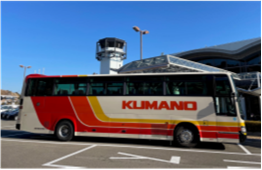
Photo 1 Airport Inspection Vehicle
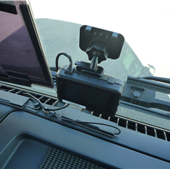
Photo 2 Driving Recorder Installation
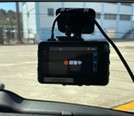
Photo 3 Airport Shuttle Bus
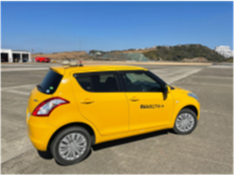
Photo 4 Driving Recorder Installation
【Report by Naotaka Ikeda, Head of Operation Unit, Nanki-Shirahama Airport, Inc. 】
The Efforts of the Nuclear Civil Engineering Committee
Post the Great East Japan Earthquake of March 11, 2011
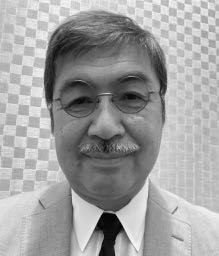
Susumu Nakamura
(Chair of the Nuclear Civil Engineering Committee)
The environment surrounding nuclear power generation underwent significant changes both in Japan and internationally following the Fukushima Daiichi Nuclear Power Plant accident triggered by the 2011 Great East Japan Earthquake, along with the subsequent damage brought about by the Fukushima disaster. The JSCE’s Nuclear Civil Engineering Committee is a committee that has conducted survey and research efforts regarding civil engineering technologies relating to the use of nuclear power, the location and construction of nuclear power plants, and the disposal of used fuel for 66 years, should its history include the work of the Nuclear Civil Engineering Technology Committee (1957), which was the committee’s previous incarnation. This article highlights the current state of committee reforms 10 years on from the Fukushima disaster and the committee’s vision for future efforts.
Regulations and policies regarding the seismic design of nuclear power plants have been revised twice, once after the Chuetsu-Oki Earthquake that hit Niigata Prefecture in 2007 and again following the Great East Japan Earthquake of 2011.Similar to those before, the efforts of the Nuclear Civil Engineering Committee were to oversee the assessment of the earthquake resistance of important outdoor civil engineering structures, the assessment of the stability of foundations, ground, and surrounding slopes at the time of an earthquake, the assessment of tsunamis, including probabilistic methods, the advancing of technologies relating to assessing the activity of fault lines, and the compiling of technical documents that contribute to the revision of standards in the private sector. It is thought that these efforts produce useful technical information as a result of earthquake resistance assessment technology based on the nonlinear finite element analysis of concrete structures, slopes, foundations, and ground, fault line displacement simulation analysis technology using advanced numerical analysis, probabilistic tsunami assessment technology, and technology to assess tsunamis caused by submarine landslides. It is also believed that these efforts provide a useful role in improving the safety of the earthquake resistance and tsunami resistance of important social infrastructure.
The goal of the Nuclear Civil Engineering Committee’s reforms is to make the efforts of the committee more impartial and transparent to society, and therefore work has been undertaken to review areas such as the member structure of the committee, procedures for formulating technical documents, and how decisions are made. As a result, it is expected that the technical documents created by the Nuclear Civil Engineering Committee will be of greater credibility to be used as standards in the private sector. Furthermore, the committee will advance its efforts to also share the English versions of its technical documents, which are the result of its hard work. To broadly make technologies relating to the safety of nuclear power public, the committee holds open lectures as well as research discussion events, and based on the feedback it receives at these events, it has set up bodies such as the Risk Communication Subcommittee, a working group relating to the overall safety assessments of nuclear civil engineering structures at the time of an earthquake, and a working group relating to preventing nuclear disasters, and also facilitates survey and research efforts in different fields than before. Additionally, as efforts opened up broadly to related academic societies as well, the Risk Communication Subcommittee works together with the Atomic Energy Society of Japan as well as related committees within JSCE.
While the environment surrounding nuclear power is a tough one, the solving of the issues faced by civil engineering technologies connected to the safety of nuclear power is thought to be essential. We wish to continue efforts trusted by society and advance the use of civil engineering technologies necessary for the safety of nuclear power, including tackling the problems surrounding the safety of disposal sites, which require the taking of realistic action.
The Nuclear Civil Engineering Committee’s Website : https://committees.jsce.or.jp/ceofnp/
【Report by Susumu Nakamura, Chair, the Nuclear Civil Engineering Committee】
Updates
◆The International Infrastructure Archives
– A Compilation of Japan’s Greatest Projects in Transfer of Civil Engineering Technology in Service –
http://www.jsce.or.jp/e/archive/
◆Infrastructure System Resilience: An Engineering Framework for Assessment, Management, and Governance
https://ascelibrary.org/doi/10.1061/9780784485088
◆IAC “News Pick Up!!” on the JSCE Japanese website
https://committees.jsce.or.jp/kokusai/iac_dayori_2023
◆Summary of featured articles in JSCE Magazine Vol. 108, No.10, October 2023
http://www.jsce-int.org/pub/magazine
◆Journal of JSCE
https://www.jstage.jst.go.jp/browse/journalofjsce
◆Call for Papers: Advances in AI, Data Science and Digital Twin
https://committees.jsce.or.jp/struct1002/node/36
◆CECAR10:http://www.cecar10.org/
◆ASCE 2023 CONVENTION, CHICAGO (October, 18-21)
https://convention.asce.org/
◆KSCE 2023 CONVENTION, YEOSE (October, 18-20)
https://eng.ksce.or.kr/activities/act01.asp?idx=60&page=1&sfield=>xt=&...
Subcription
The IAC News is one of the communication tools to share information and ideas with the members. We would like to invite you, your friends and colleagues to join the communication and to subscribe the IAC News. Please register online: (http://www.jsce-int.org/node/150). We look forward to meeting you.
